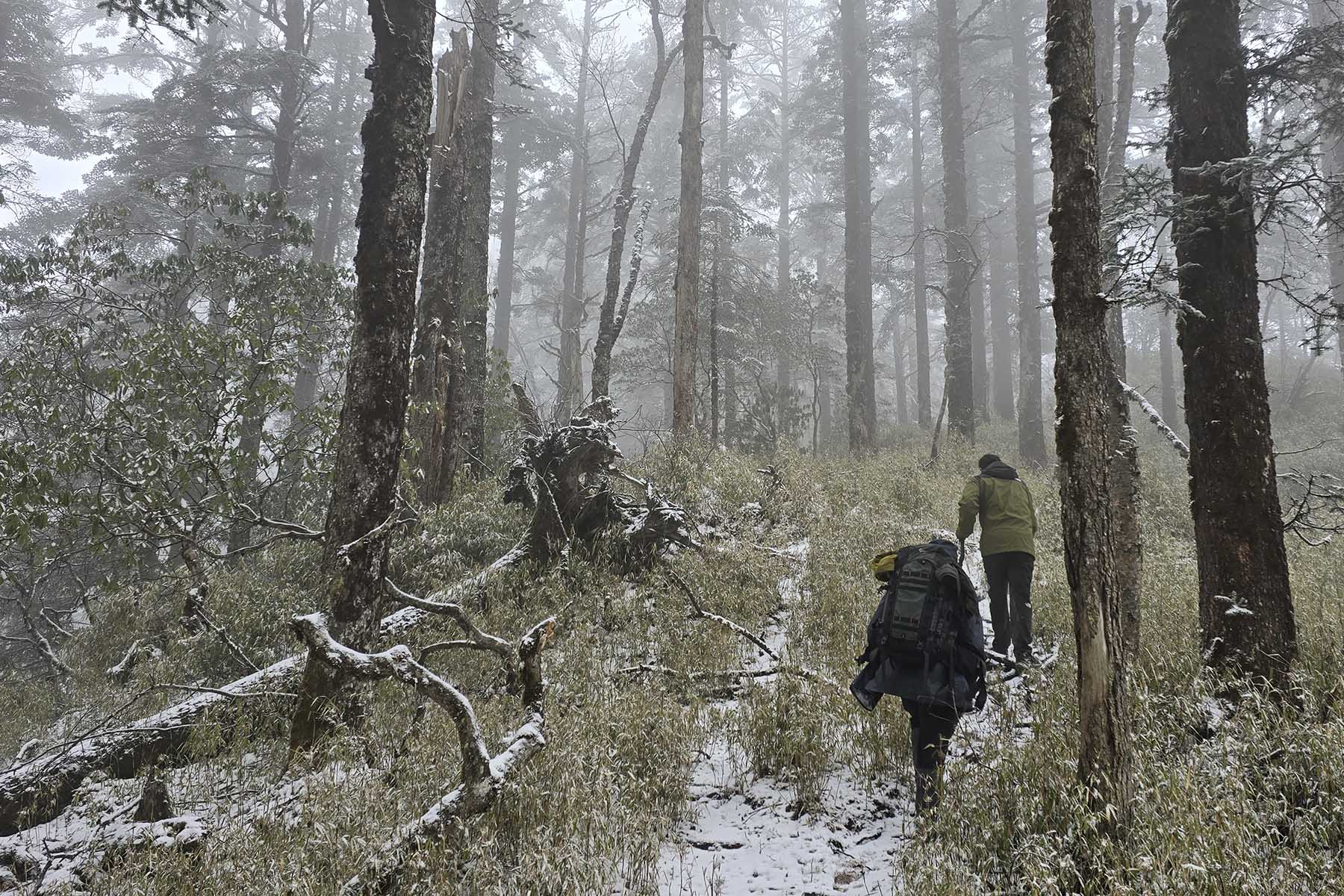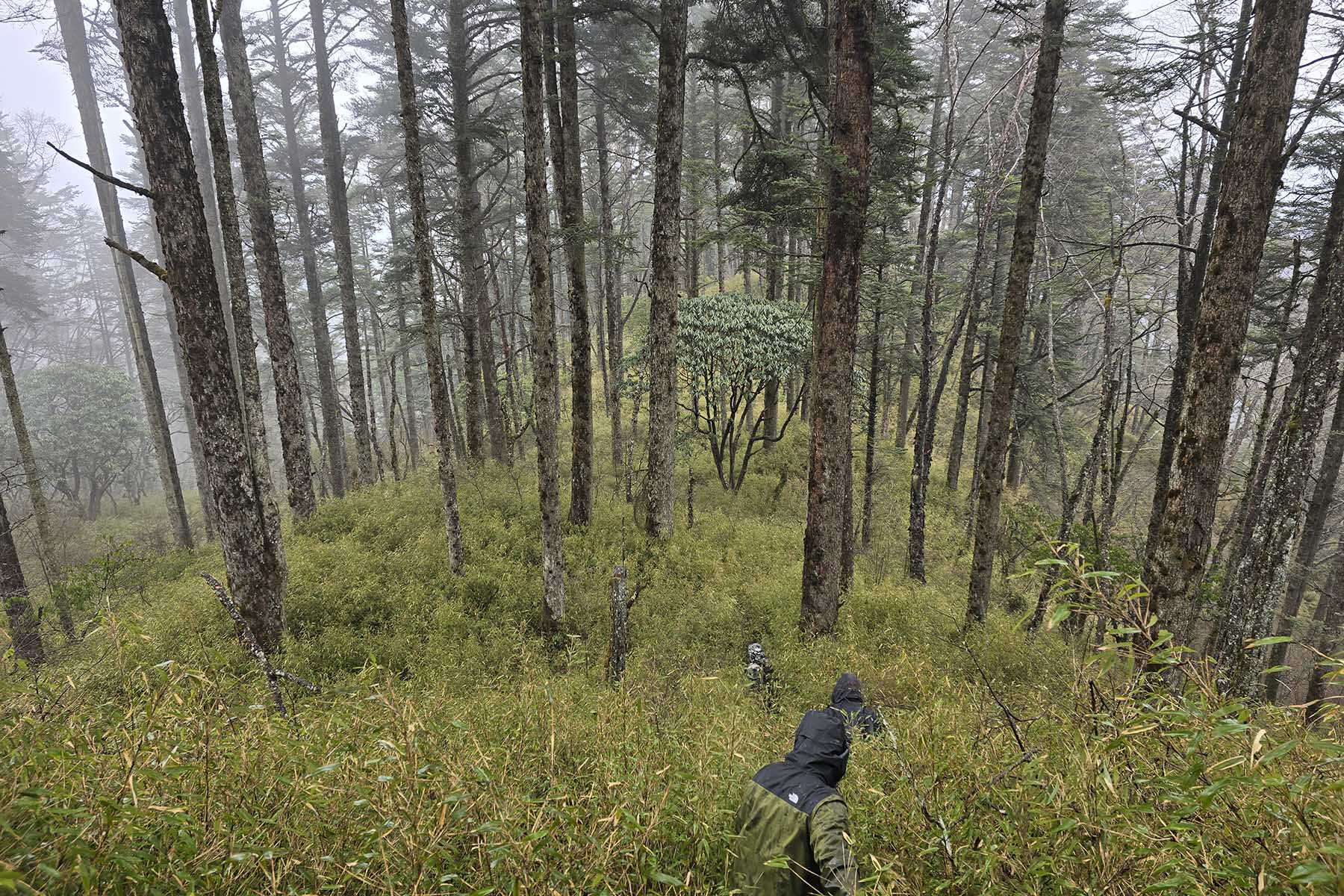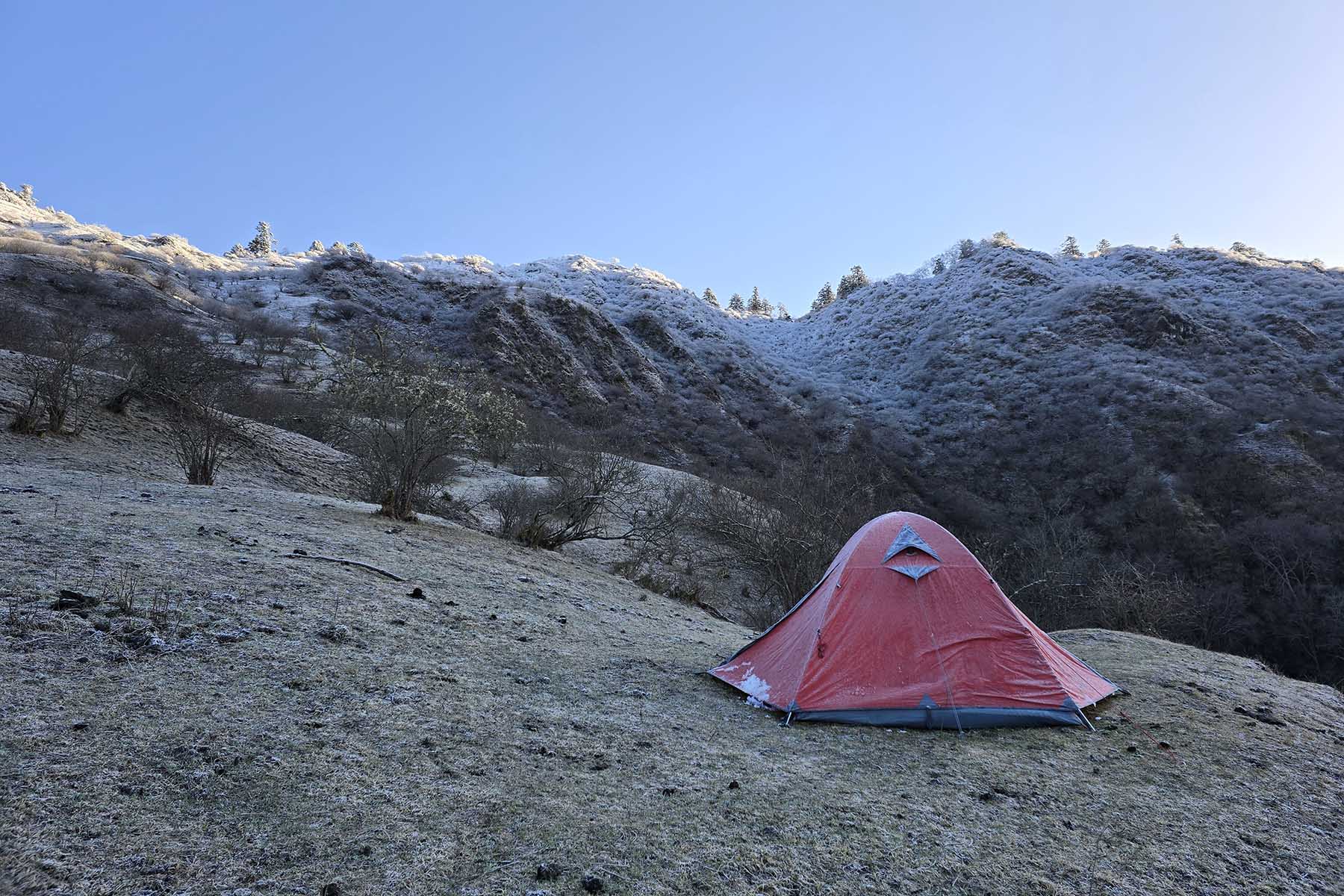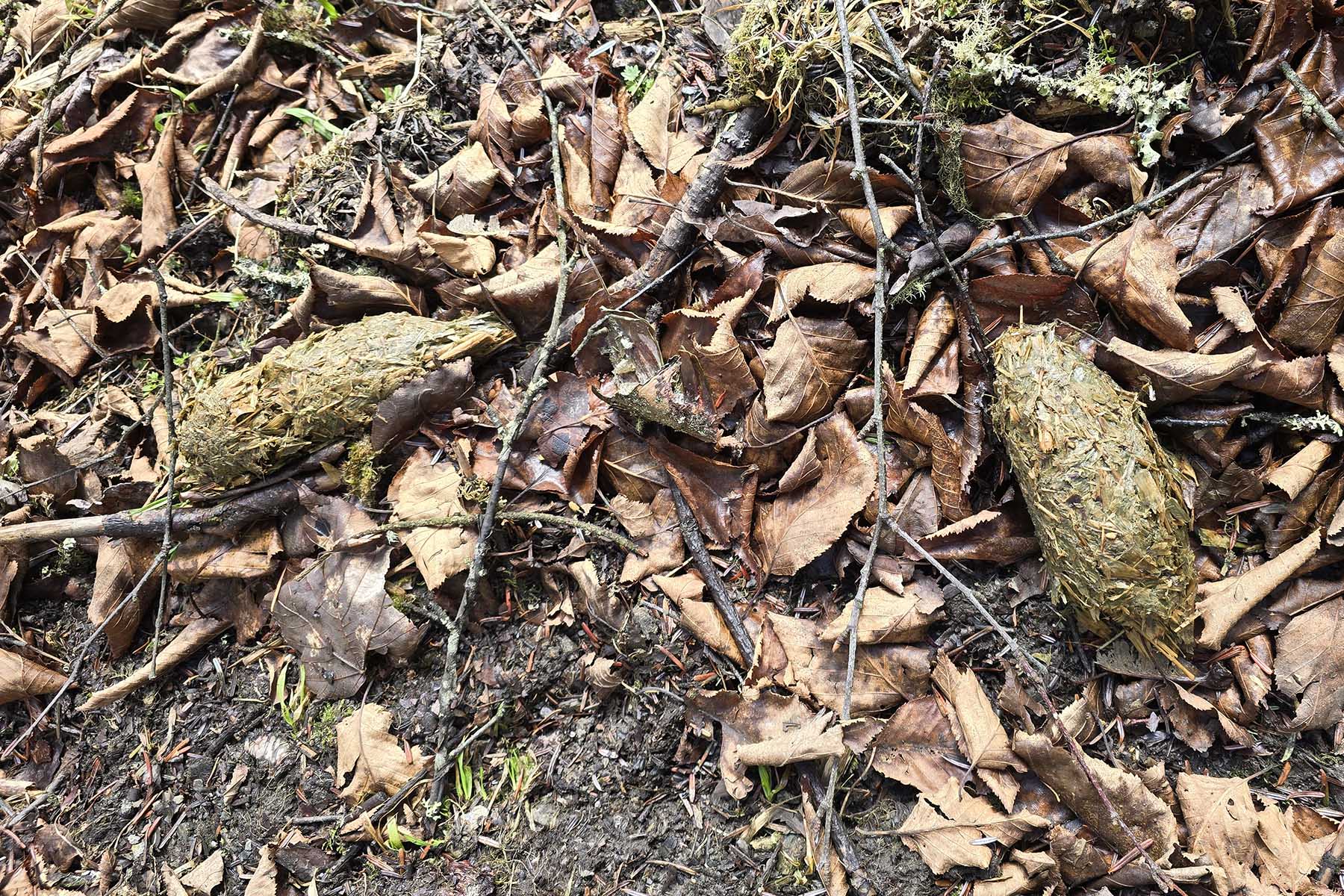Chengdu
Hometown of Pandas
Jiuzhaigou
Famous Fairyland
Emeishan
Sacred Buddhist Site
Leshan
Giant Buddha
Gonggashan
Best for Hiking
Daocheng Yading
Shangri La Views
Dujiangyan
Irrigation System
Siguniangshan
Eastern Alps
Looking for pandas in the wild is in general very hard. You are welcome to talk with us if you wish to engage in such a trip. We have been into the panda habitats multiple times by different locations and we are willing to share our experiences with you.
A trip to search for pandas in the wild for purposes of either photography or just looking at them are in general very hard. You will expect long and hard walks, sleeping in tent, eat basic food, walk in wet/cold/humid conditions, spending time on preparations, packing, taking care of your cameras, etc.

Wet Weather is Common
We recommend you to read through our webpages on wild pandas when you want to plan for a trip to look for pandas in the wild. Normally the longer time will increase to a higher chance of you seeing/photographing a panda in the wild. If you are in a group, make sure everyone understands the hardship, the frustration it may have in a wild panda trip. We recommend you to spend time on learn what to prepare for such a trip including your clothing, your gears and equipment. We recommend you to talk with us and have all your questions answered, all options laid out and talk the scenarios and solutions before commit to a trip.
Walking is very hard in general. It is certainly not like a walk in a park. To walk to the camp it gains a lot in elevation so please be prepared for steep terrain and therefore please prepare relevant gears for this. We recommend you to have walking poles with you if you are not used to steep walkings. Every day on the search you willl be walking inside the forest in bamboo bushes where there is no trail. You will be led by local guide but you will also be largely responsible for yourself on walking and taking care of yourself. The bamboo bushes are never made for humans to walk. There is no trail so you could expect anything underfoot. The bushes will block your eyesight you need to use your hand all the time. Some sections are steep so you need to know how to grab on whatever is available to keep balance of yourself. A lot of the times walking will be in wet conditions that the bushes are wet and it be muddy or slippery.
You will most likely be walking all day long for most of your time while searching pandas. Distance wise it can be just 8-10km but it can be very tiring given the terrain is steep and weather is not good. You won't be making good pace when you are walking in bamboo bushes or in wet conditions. Sometimes you may need to walk for over 15km or more. You also need to be aware of keeping yourself warm/dry during wet conditions to avoid health issues. Because once you are sick you can't continue on such a trip. This will require you to have sufficient preparations on gears and clothing.

Most Walking is inside these Bamboos
There are no hotels, hostels or villages near any panda habitat that is within walking distance. Most wild panda trips will need to set up a base camp and then go out to look for pandas each day. Some occasions we may move base camp to deeper into the mountains if your time allows. Everthing will be very basic because everything needs to be carried by humans up to the camp as close as possible to the panda habitat to avoid the long walks if staying low by the villages. Often these camps are only accessed by foot. You will be sleeping in a tent. You can request on a single tent to have more privacy. And we can also cater to more comfortable campings by offering better gears such as air matress and more comfortable sleeping bags. But overall if you are not used to camping then this can be challenging. The food provided is local style and is usually very basic with rice and stir-fries. We can also cater to more varioty of food and taste upon request but overall the food is basic because everything needs to be carried up by human. Place to set camp is also crucial as you will also need clean drinking water.

Morning Temperature drops to Lowest
One of the things that will likely happen is you will see panda faeces at multiple places. You will also need to learn how fresh these faeces are to make a judgement of whether you want to explore around more at this location because pandas travel from place to place constantly and they don't have a permanant or even seasonal home to stay. Come in late March/early April has an advantage of seeing possible footprints left by pandas on the snow that are not melted. It also has a disadvantage that the snow covers the faeces left by pandas. You are recommended to read more on the panda habbits and follow panda guide closely while on the trip.
Tracking a panda is not easy especially when the group is bigger than 3 people. Another challenge is when the group is bigger than 3 people it's hard to keep everyone aligned on walking, searching, keeping quiet, preparing for taking photos, etc.
We list some panda habbits here:Pandas come down to a creek or stream to drink water once a day or once 2 days. Mating play could last for hours. Once a panda is startled, it doesn't stay. Pandas could be startled by other animals too.

Fresh Panda Faeces
We, Sichuan Travel Guide, as a company we have experience organizing and arranging such trips. We don't offer these trip by ourselves but rather offer these services on behalf of local guides. We learnt that local people have given up hunting for a generation now and some have tuned into panda guides or hiking guides working in mordern tourism and willing to take people up the mountain looking for pandas in the wild. These local guides are strong, hard-working but also have their own way of doing things based on their experiences and knowledge on the forest and pandas. Most local guides don't speak English that's why you also need a translator that is usually arranged by us.

Route: Chengdu - Wolong - Chengdu

Route: Chengdu - Wolong - Chengdu

Route: Chengdu - Wolong - Chengdu